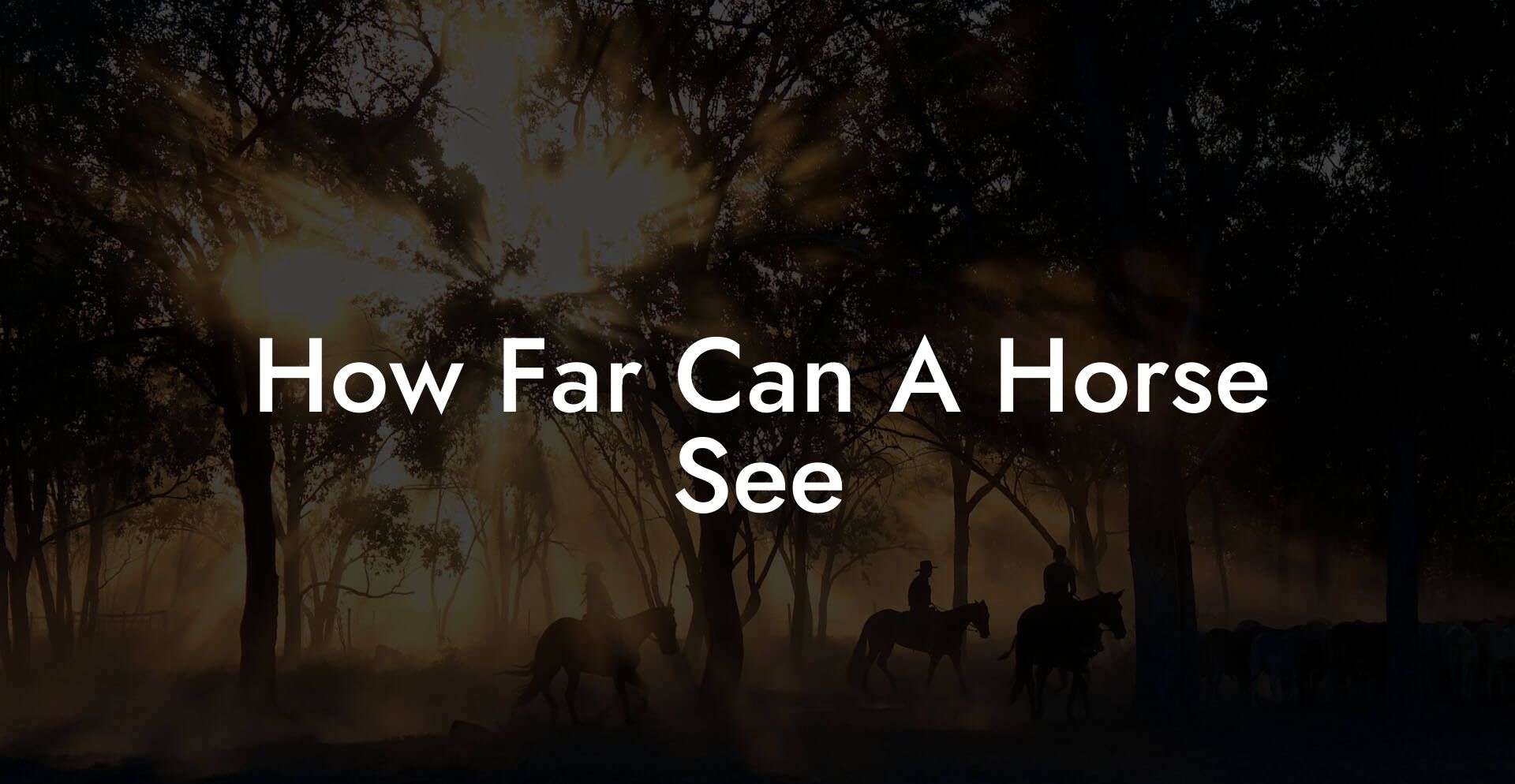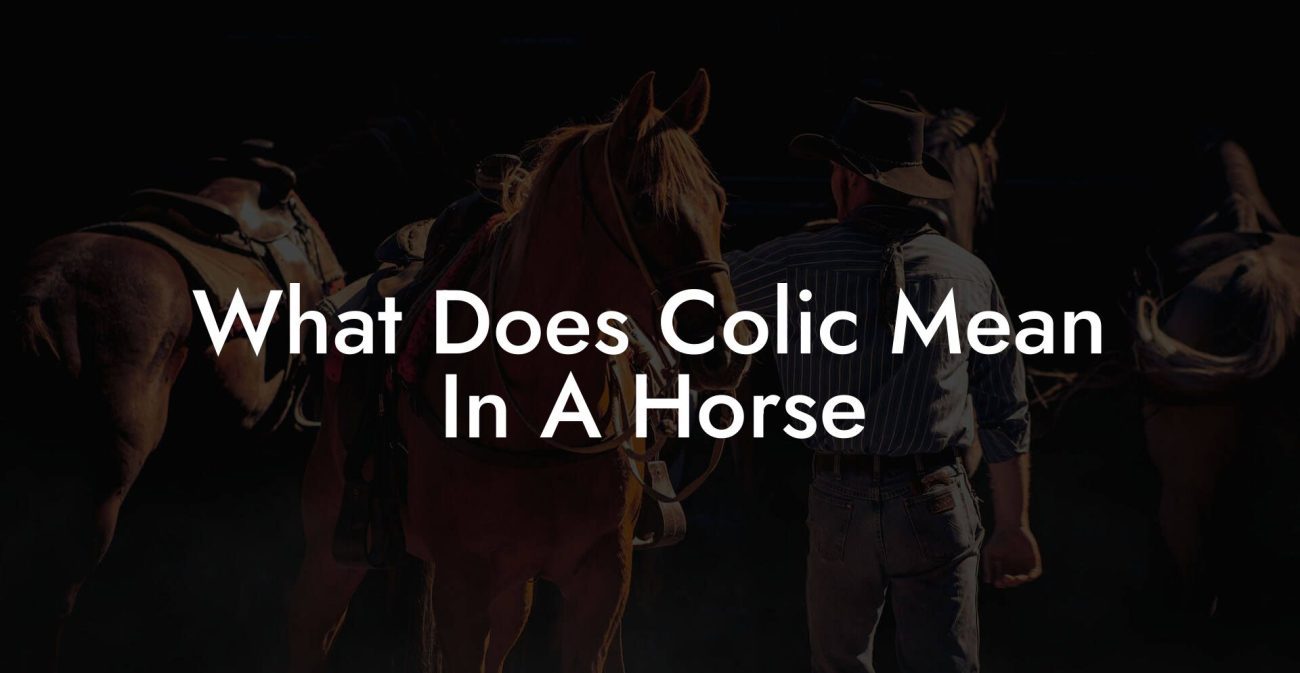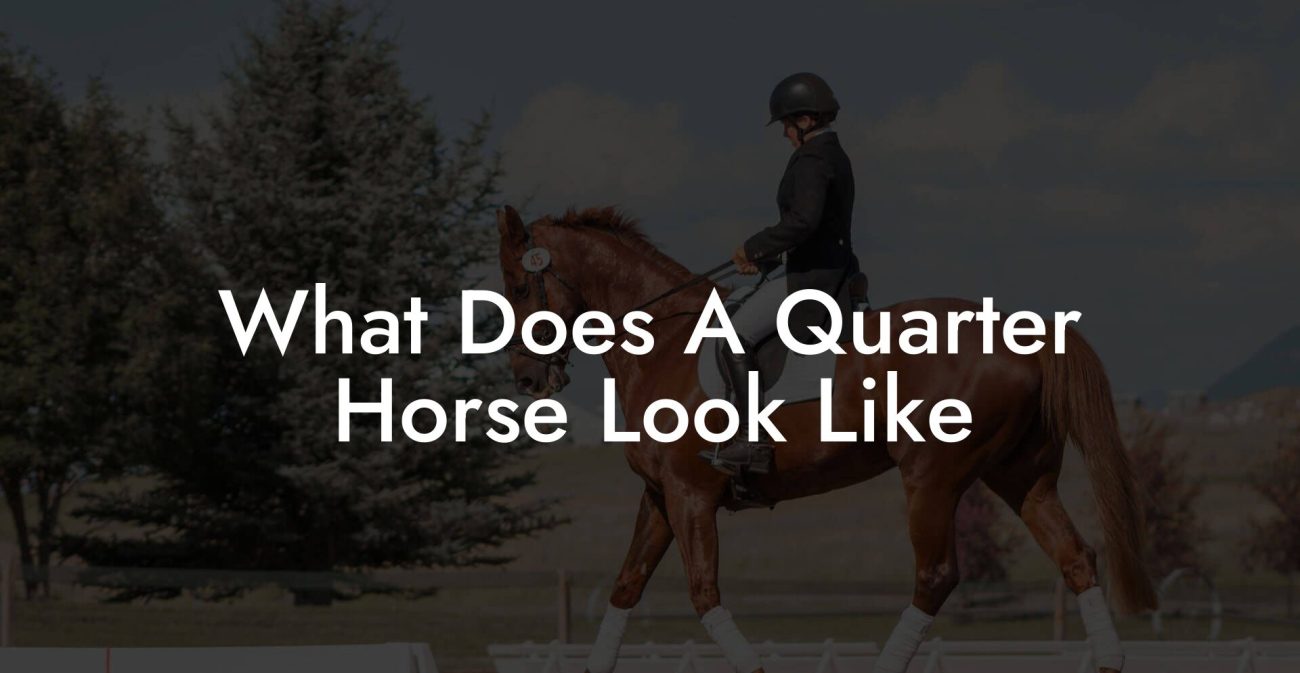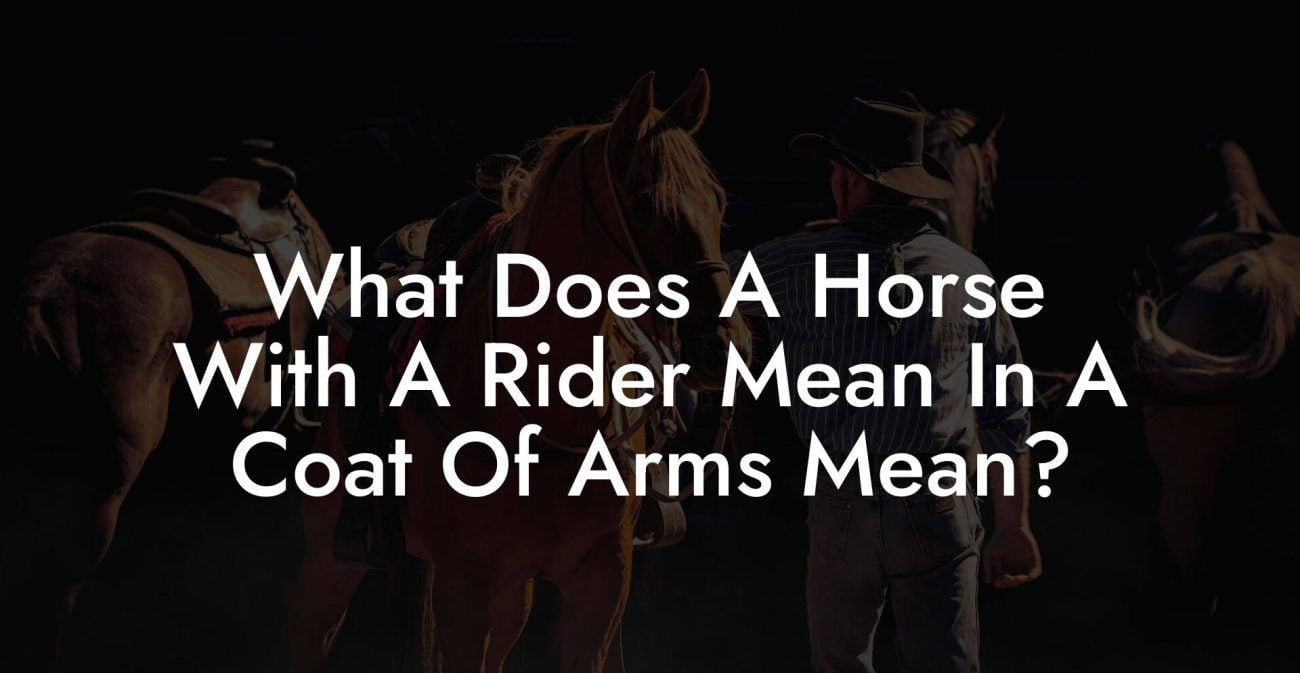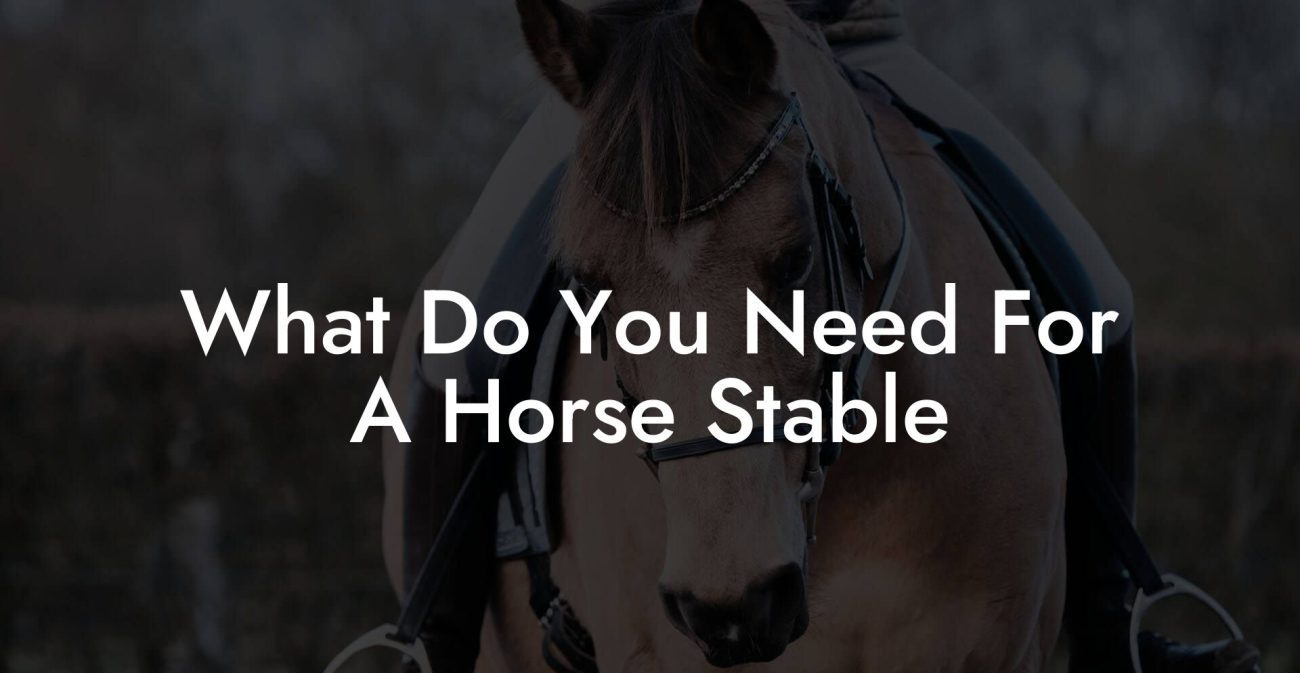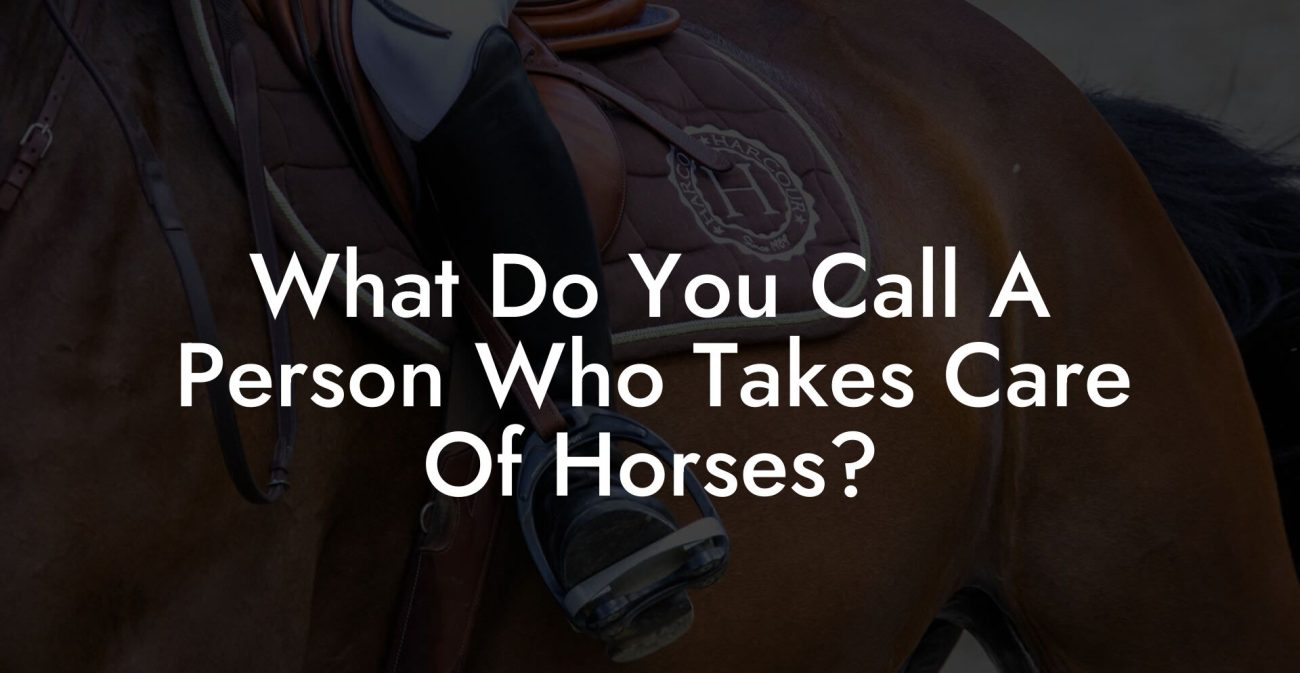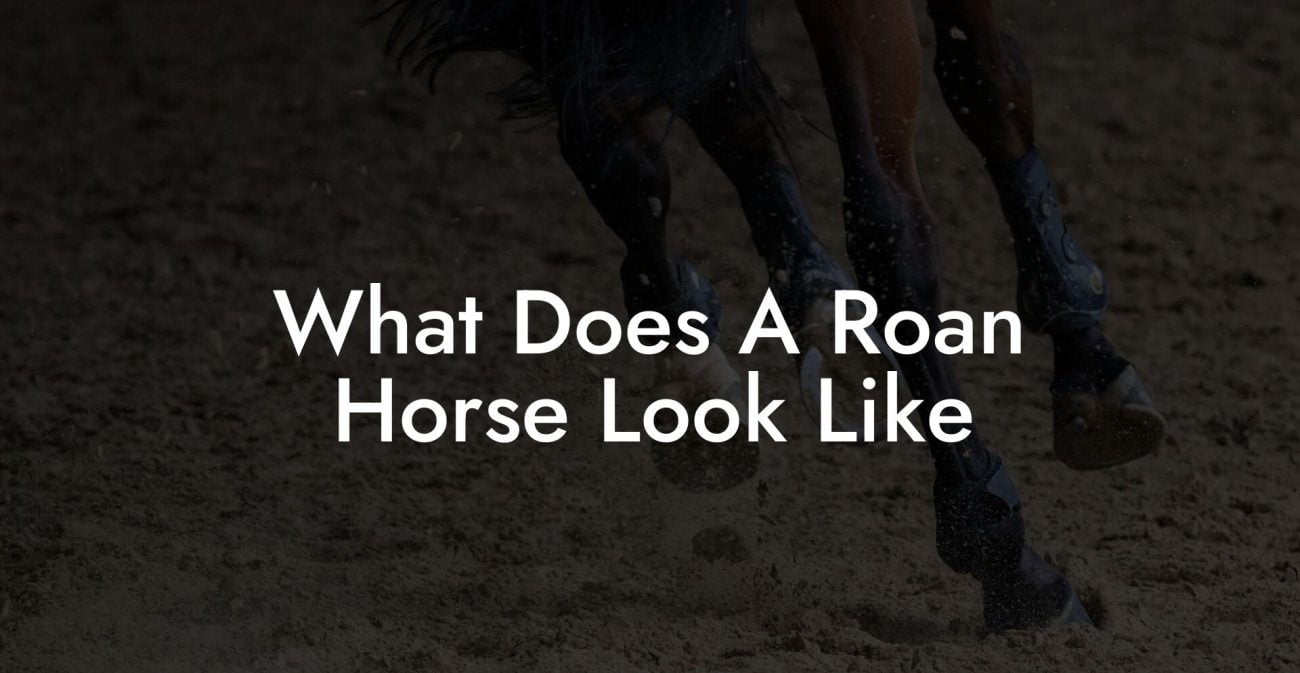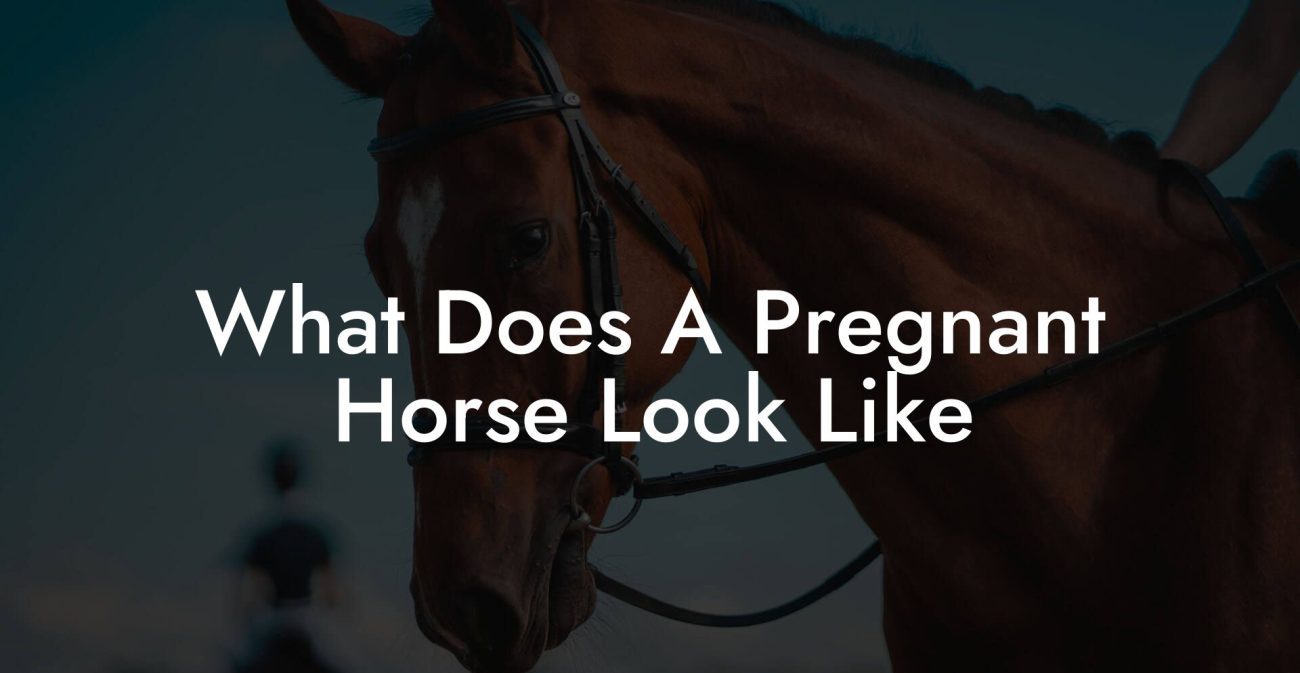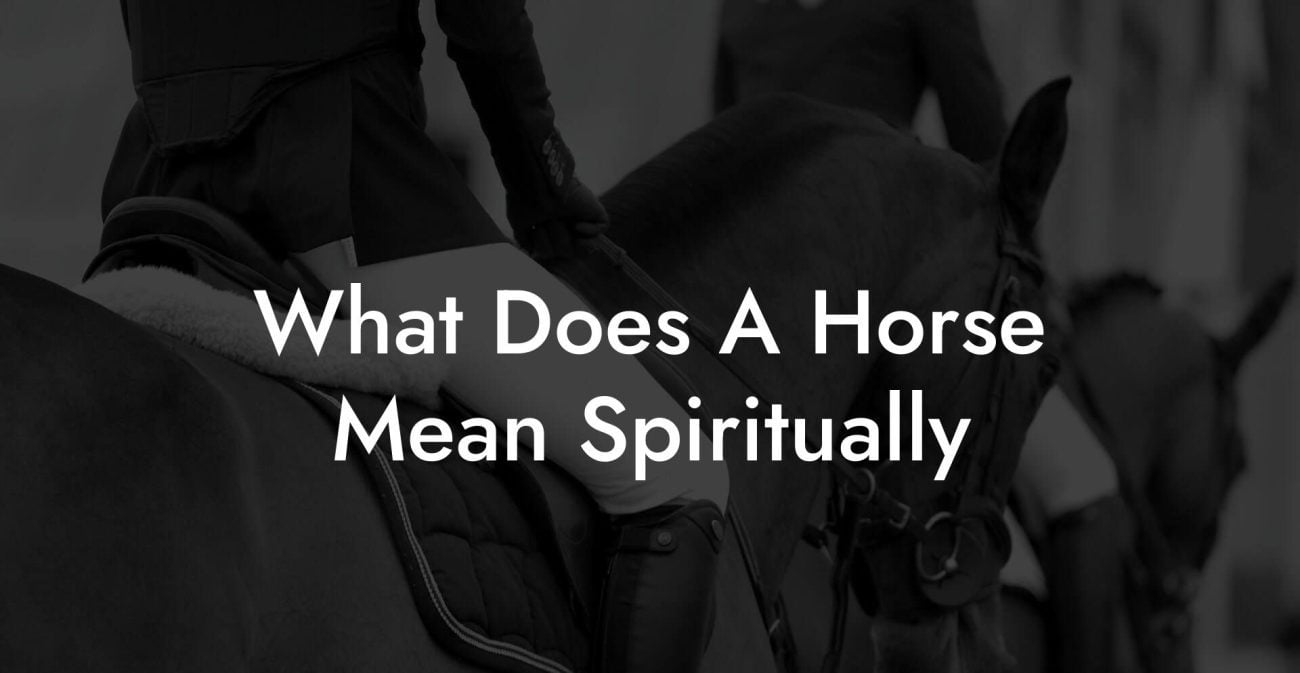Horses are more than just beautiful creatures grazing in the field, they’re endowed with a surprisingly expansive view of the world that might just blow your mind. Ever wondered how far a horse can see or why they seem to have eyes in the back of their heads? This deep dive into equine vision explores the science, behavior, and essential care tips for those who love their four-legged friends. So buckle up (or saddle up, rather) for a wild ride into the fascinating realm of horse vision and discover how understanding their sight can transform the way you care for your equine companion.
Quick Links to Useful Sections
- The Incredible World of Equine Vision
- How Far Can A Horse See? Exploring Their Vision Range
- The Anatomy Behind Equine Vision
- The Positioning of the Eyes
- Specialized Retinal Cells
- Depth Perception and Color Vision
- Comparing Horse Vision to Human Vision
- Practical Implications of a Horse's Field of Vision on Their Behavior and Care
- Enhancing Your Horse's Vision: health and Care Tips
- Fun and Fascinating Facts About Horse Vision
- Holistic Approaches to Equine Eye Health
- Natural Supplements and Herbal Remedies
- Environmental Enrichment
- Stress Reduction Techniques
- Equine Vision in the Wild: Evolution and Survival
- Smart Tips for Caring for Your Horse’s Eyes and Vision
- Resources and Community Support: Your Next Steps
- Your Journey to Master Equine Vision and Horse Care
- Equine Vision FAQs: Your Questions Answered
- Your Path to Exceptional Equine Care Begins Now
The Incredible World of Equine Vision
Horses are designed to thrive on the open plains, where danger, and opportunity, can appear in an instant. With eyes positioned on the sides of their heads, these majestic animals have evolved to possess an almost panoramic view of their surroundings. This unique design serves as a natural alarm system, alerting them to predators and other environmental surprises long before a human could even blink.
In this comprehensive guide, we delve into the nuances of equine vision: exactly how far can a horse see, what kind of details they perceive, and why an understanding of their visual capabilities is crucial for proper horse care. Along the way, you'll discover a treasure trove of practical tips, intriguing scientific insights, and even some fun, quirky facts that make horses truly one-of-a-kind.
Whether you’re a seasoned equestrian, a weekend rider, or a Gen-Z curious about the biology behind horse care, you’re in the right place. We’ll mix science and humor, technical details and laid-back conversation, making sure that every horse lover walks away with a deeper appreciation of these incredible animals.
How Far Can A Horse See? Exploring Their Vision Range
The burning question for many horse enthusiasts is: how far can a horse see? The simple answer is that horses have an extraordinarily wide field of vision, but the specifics are even more impressive. Due to the placement of their eyes, horses enjoy a field of view that can extend up to 350 degrees, allowing nearly panoramic vision. This expansive range gives them a clear advantage when detecting movement and potential threats.
However, while horses do offer nearly 350-degree peripheral vision, there is a catch. Right in front of their noses, there is a blind spot, and similarly, a small area directly behind them remains unseen. This means that while they’re incredibly adept at noticing side-to-side activity, they rely on other senses and herd dynamics to compensate for these blind spots.
In equine science, these insights not only redefine our understanding of horse behavior but also influence how we manage and care for these incredible animals. For example, knowing that your horse might not see something directly in front of them can inform safer handling practices and better stable management.
Keywords like “equine vision”, “how far can a horse see”, and “horse sight range” are more than just SEO gold, they're reflections of the deep, fascinating science behind this common yet rarely questioned marvel of nature. With each new study, we uncover more about how horses interact with the world, reminding us that caring for them means understanding their sensory perceptions.
The Anatomy Behind Equine Vision
To truly understand how far a horse can see, it’s essential to take a closer look at the anatomy of the equine eye. Their visual system is a masterpiece of evolutionary adaptation, perfectly suited for life on the run. The unique structure of a horse’s eye differs significantly from that of humans, contributing to an unrivaled peripheral vision.
The Positioning of the Eyes
Unlike humans, whose eyes are located centrally on their faces for a focused, binocular view, horses have their eyes situated on the sides of their heads. This lateral placement creates an expansive field of vision, almost like having two cameras positioned at opposite ends. The result is an incredible breadth of awareness, enabling them to spot predators or changes in their environment from nearly every angle.
The trade-off? A limited overlap of the fields of vision from each eye, which means that the area right in front of them, where the visual fields converge, is relatively narrow. This setup ensures that while horses excel at detecting movement on the periphery, they have a slight handicap when it comes to observing objects directly ahead.
Specialized Retinal Cells
The retina of a horse’s eye is equipped with a high density of rod cells, which are responsible for detecting light and movement. This design is particularly beneficial for low-light conditions, ensuring that horses remain alert at dawn, dusk, or during overcast weather. The abundance of these cells means that even faint, distant signals can be picked up quickly, an essential survival trait for any prey animal.
Additionally, the unique structure of their retina creates an area called the "visual streak." This is a horizontal band of high acuity that enhances their ability to detect movement along the ground. Because horses are often scanning a vast landscape, this adaptation allows them to focus on what matters most, whether it’s a rustle in the grass or the distant gallop of a herd mate.
Depth Perception and Color Vision
While horses do possess depth perception, it’s not as refined as that of humans due to the limited overlap in their visual fields. Nevertheless, their ability to gauge distances is more than adequate for their needs in the wild, where detecting movement and immediate threats is paramount.
When it comes to color, horses see the world in a palette that’s less vivid than ours. They are believed to have dichromatic vision, meaning they perceive two primary colors rather than the three (red, blue, and green) typically observed by humans. Although their color range is limited, it doesn’t hinder their ability to distinguish between essential details in their environment.
Comparing Horse Vision to Human Vision
It’s one of those fun comparisons that shows just how unique horses really are. Humans have a focused field of vision, completely optimized for detailed tasks like reading and recognizing faces. Our eyes work together to give us sharp, three-dimensional images but at the cost of almost complete blind spots on our periphery.
Horses, on the other hand, live in a world where speed and early detection are their insurance policies. Their lateral eye placement means they’re virtually surrounded by a visual safety net. Whereas you might have to turn your head to catch a soft whisper behind you, a horse is already aware of every subtle movement happening even at the edges of its vision.
This difference isn’t simply academic, it informs practical aspects of equine care and training. For instance, when approaching a horse from the front, a handler must remember that the animal’s blind spot means the horse might not see their movement clearly, sometimes resulting in a startled reaction if the approach is too sudden.
Understanding these distinctions can help foster better communication between you and your horse, ensuring that every pat, every groom, and every command is delivered with an awareness of their natural visual predispositions.
Practical Implications of a Horse's Field of Vision on Their Behavior and Care
The extraordinary field of view provided by a horse’s eye placement directly influences their behavior and how they interact with their environment. This natural ability not only makes them more vigilant but also helps shape their herd dynamics and individual responses to stimuli.
For instance, horses are known to be highly aware of any movement in their peripheral vision. This means that even the smallest brush of grass or a distant shadow can trigger a reflexive alertness. While this sensitivity is crucial in the wild, it can sometimes lead to a state of constant vigilance in domestic settings, especially if the horse is kept in environments with a lot of unexpected motion.
From an equine care perspective, this means that stable layout, pasture management, and even the design of enclosures should take into account a horse’s natural need for an unobstructed view. Ensuring that horses have a clear line of sight can reduce stress and promote a sense of security, both of which are essential for their overall well-being.
Moreover, understanding that horses have a blind spot directly in front of them suggests practical guidelines for handling and training. Approaching a horse from the side rather than head-on can help prevent startling them and build trust between the animal and the handler. It’s these small, thoughtful adjustments that make a big difference in creating a positive, nurturing environment for your equine partner.
Enhancing Your Horse's Vision: health and Care Tips
Just like any other aspect of equine health, maintaining optimal vision is essential for a horse’s well-being. The eyes are not only the windows to the soul, but also vital instruments that help horses navigate the world. Effective eye care can prevent infections, injuries, and long-term vision problems.
Here are some horse care tips specifically designed to support healthy vision:
- Routine Check-Ups: Regular veterinary examinations can help catch any issues early on, from infections to injuries. Your vet can assess not just the eyes, but the overall condition of your horse, ensuring that any vision problems are addressed swiftly.
- Clean Environments: Dust, debris, and airborne particles can irritate a horse’s eyes. Keeping stables and pastures clean is crucial. Consider installing proper ventilation and doing regular cleaning routines to minimize irritants.
- nutrition for Optimum Eye Health: Just as certain foods can boost our eyesight, horses benefit from a balanced diet rich in antioxidants, vitamins, and omega fatty acids. Including foods such as leafy greens, carrots, and specially formulated equine supplements can help maintain eye health.
- Proper Lighting: Horses can be sensitive to glare and fluctuating light conditions. Ensure that stables and barns are well-lit with diffused natural light or soft, artificial lighting to reduce strain on their eyes.
- Protective Measures: In environments where dust or flying debris is common, consider using fly masks that not only protect against insects but also shield the eyes from debris.
Integrating these tips into your daily horse care routine can make a significant impact on your animal’s quality of life. Being proactive about eye health is a key part of responsible equine care, ensuring that your horse remains as alert and responsive as nature intended.
Fun and Fascinating Facts About Horse Vision
The realm of equine vision is filled with quirky tidbits and surprising facts that even the most devoted horse enthusiasts might not know. Here are some fun insights guaranteed to spark conversation at your next riding session:
- Nearly 350 Degrees of Awareness: Horses possess up to 350 degrees of visual field, meaning they can see almost all the way around their heads. That’s like having a built-in security system 24/7!
- Blind Spots Matter: Despite their broad panoramic vision, horses have blind spots directly in front of and behind them, which is why they tend to be extra cautious when someone approaches from the side.
- Motion Detectives: Their retinas are packed with rod cells, making horses expert at detecting even subtle movements, which is crucial for their survival in the wild.
- Color Perception: Horses see the world in a more muted color spectrum compared to humans. They are thought to be dichromatic, perceiving blues and yellows but having difficulty discriminating reds.
- Evolutionary Advantage: The unique eye positioning of horses evolved to maximize their ability to detect predators, making them naturally vigilant and responsive, a true survival advantage.
These fun facts not only highlight the marvels of equine evolution but also serve as a reminder that understanding these intricacies can improve how we interact with and care for horses every day.
Holistic Approaches to Equine Eye Health
While the anatomy and science behind horse vision are awe-inspiring, it’s equally important to adopt a holistic approach when it comes to caring for your horse’s eyes. Just as integrative methods can benefit human health, horses can thrive on a well-rounded regimen that marries conventional veterinary care with natural, everyday practices.
Consider the following integrative approaches:
Natural Supplements and Herbal Remedies
Certain herbal remedies and natural supplements are believed to support eye health in horses. Supplements that include antioxidants like vitamin E and beta carotene can help combat oxidative stress, which in turn supports the delicate tissues in the eyes. Always consult with a qualified veterinarian before introducing any new supplements into your horse’s diet.
Environmental Enrichment
A horse’s vision isn’t just about seeing clearly, it’s also about processing a varied environment without stress. Ensuring that your horse’s living space features a mix of natural light, safe reflective surfaces, and regular opportunities for outdoor activity can promote healthier vision. A well-enriched environment can reduce stress and help mitigate issues like eye strain.
Stress Reduction Techniques
Just as stress can exacerbate vision problems in humans, horses may also benefit from a calm and stable environment. Gentle handling, routine socialization with herd mates, and even the occasional grooming session all contribute to reducing stress and maintaining overall eye health.
Incorporating these holistic strategies into your overall horse care plan not only protects your horse’s vision but also enhances their quality of life. A well-cared-for horse is a happier, healthier, and more vibrant animal.
Equine Vision in the Wild: Evolution and Survival
The evolution of equine vision is a story woven into the fabric of nature itself. Thousands of years ago, wild horses roamed vast landscapes dotted with predators and competitors. The need to quickly detect any movement in their wide-open habitat was not just an advantage, it was a matter of survival.
Today, domesticated horses still carry the echoes of that evolutionary past, with their eyes perfectly tuned to spot even the slightest rustle in the wind. The remarkable breadth of their vision doesn't just help them evade danger; it also allows them to navigate complex environments and interact with a diverse array of stimuli.
For modern equestrians, understanding this evolutionary heritage can enhance training techniques and stable management practices. Recognizing that a horse’s natural response is heightened alertness enables you, as a caretaker, to create environments that reduce anxiety and promote natural, confident behaviors.
From a practical standpoint, considering a horse’s natural instincts when designing pastures or riding arenas can lead to a safer and more enriching experience for both the horse and the rider. It’s about tapping into the deep-rooted wisdom of nature and aligning modern care practices with the natural evolution of equine vision.
Smart Tips for Caring for Your Horse’s Eyes and Vision
Now that we’ve journeyed through the science and evolution of horse vision, let’s talk about actionable tips that you can integrate into your daily horse care routine. Whether you’re a newbie rider or a seasoned stable manager, these insights are crafted with a Gen-Z and millennial audience in mind, practical, relatable, and sometimes even a little humorous.
Be Mindful of Approach: Always approach your horse from an angle, not straight from the front, to avoid startling them. Think of it as a gentle, scenic route rather than a head-on collision!
Routine Eye Checks: Just as you might check your phone for notifications, regularly check your horse’s eyes for signs of irritation, redness, or discharge. A healthy eye is a happy eye, and a happy horse makes for a more relaxed and trusting companion.
Grooming with Care: When grooming your horse, pay special attention around the face and eyes. Use a soft cloth, and if you notice dust or debris, gently clean it away, because even horses appreciate a little pampering.
Environment Matters: Ensure that your horse’s living areas are free from airborne irritants. A clean, well-ventilated stable not only supports clear vision but also contributes to overall health.
Monitor Dietary Intake: Feed your horse a balanced diet that supports eye health. Foods rich in antioxidants and omega fatty acids are excellent for maintaining the delicate tissues of the eyes.
These simple, yet effective, tips are designed to integrate seamlessly into your horse care regimen. Remember, paying attention to the little details goes a long way in ensuring that your equine friend enjoys not only robust vision but also a more balanced and joyful life.
Resources and Community Support: Your Next Steps
The journey to understanding how far a horse can see and how to care for their magnificent vision is ongoing. There are countless resources available, from scientific journals and equine care websites to local veterinary experts and online communities. Tapping into these resources can help you stay up-to-date with the latest research and techniques in equine eye health.
Consider joining online forums and social media groups where fellow equestrians share their personal experiences, ask questions, and exchange practical tips. Communities like these not only offer valuable insights but also create a space for sharing humor, stories, and even the occasional epic riding fail, because let’s face it, every horse rider has a story!
Whether you’re looking for expert advice or simply want to connect with other horse lovers, don’t hesitate to reach out. Educating yourself about equine vision care can only enhance your relationship with your horse, making every ride and every stable visit that much more enjoyable.
The next steps are yours, dive into the world of equine research, consult with specialists, and join the vibrant community of modern horse enthusiasts who are redefining what it means to care for these remarkable animals.
Your Journey to Master Equine Vision and Horse Care
Embracing the science of how far a horse can see isn’t just about satisfying a curious mind, it’s about fostering a deeper connection with the animals you care for. By understanding the intricate details of equine vision, you unlock new ways to train, nurture, and create a safe environment for your horse.
Every step you take to learn more about horse vision and proper care contributes to a broader understanding of holistic equine health. Imagine a world where every grooming session, every ride, and every quiet moment in the stable is enriched by knowing exactly what your horse perceives, from the subtle shift of light at dusk to the faintest movement in their peripheral view.
Armed with knowledge and armed with passion, your journey into the realm of equine vision care becomes a transformative experience. Far from being just another mundane task on the checklist, caring for your horse’s eyes is an essential part of an integrated approach to overall equine well-being. Let that motivate you not only to nurture your horse’s physical health but also to celebrate the wonder of nature's design.
So, saddle up, stay curious, and never stop exploring the amazing nuances of equine vision. Every bit of knowledge you gain shapes you into a more confident, caring, and informed horse caretaker. Your journey towards mastering the art and science of horse care begins here, with a newfound appreciation for the incredible ways in which horses see the world.
Equine Vision FAQs: Your Questions Answered
Here are some frequently asked questions that dive into the intricacies of horse vision, care tips, and the science behind it all.
1. How far can a horse actually see?
Horses possess a panoramic field of vision of nearly 350 degrees, thanks to the lateral positioning of their eyes. However, they do have small blind spots directly in front and behind them.
2. Do horses see in color?
While horses aren’t completely colorblind, their color vision is much more limited than that of humans. They are believed to perceive primarily blues and yellows, with reds appearing more muted.
3. How does a horse’s vision benefit their survival?
Their wide field of vision allows horses to detect predators and sudden movements from almost any direction, a vital adaptation for a prey animal.
4. What are some signs of vision problems in horses?
Look out for excessive squinting, abnormal eye discharge, or changes in behavior such as increased nervousness. Any persistent issues should be evaluated by a veterinarian.
5. Can the eyes of a horse be injured by environmental hazards?
Yes, horses can suffer eye injuries from debris, dust, or flying objects. Maintaining a clean environment and using protective gear, like fly masks, can help guard against these hazards.
6. What routine care should be provided to support equine eye health?
Regular eye inspections, a balanced diet rich in antioxidants, proper stable lighting, and ensuring the environment is free from irritants are all essential components of equine eye care.
7. Are there natural supplements that can improve my horse’s eye health?
Some supplements high in vitamin E, beta carotene, and omega fatty acids can help maintain eye health. Always consult your veterinarian before introducing any new supplements.
8. How does a horse’s vision affect the way I should handle them?
Knowing that horses have blind spots, especially directly in front of and behind them, informs safe approaching techniques. Always try to approach from the side to prevent startling your horse.
Your Path to Exceptional Equine Care Begins Now
Delving into the world of equine vision not only quenches your curiosity about how far a horse can see but also empowers you to provide better care for your horse. By understanding the intricacies of their unique visual abilities, you can anticipate their needs, address potential health issues proactively, and foster a deeper, more trusting relationship.
Every thoughtful gesture, be it a routine eye check, a carefully curated diet, or an enriched living environment, signals your commitment to your horse's overall happiness and vitality. Embrace these insights with the spirit of adventure and innovation, ensuring that every horse care decision is backed by both science and empathy.
Your journey into the realm of equine care is a testament to your passion for these magnificent creatures. Let each new fact and every diligent care routine propel you toward becoming a truly exceptional horse caretaker. Now, take the reins, educate yourself further, and join a community of caretakers who are as committed to equine well-being as you are.
Celebrate the wonder of nature’s design, where every glance and every motion is a reminder of the complex interplay between biology and behavior. Your adventure into the science of horse vision and the care it demands is just beginning, so saddle up and experience the extraordinary.

